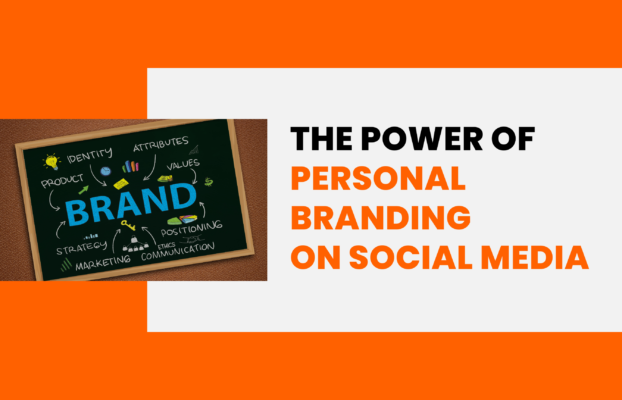Stories are what people remember in a noisy world; data and features alone won’t make you stand out. Customers of today want to know why you are in business, not just what you sell. What do you think is true? How did you get here? How does your brand improve their quality of life? Brand narrative can help with that. It makes your company more relatable, creates an emotional bond with your audience, and turns them from indifferent onlookers into devoted supporters. You don’t need a flawless script, so don’t stress if you’re not sure where to start. To begin speaking your truth, all you need are a few easy steps, clarity, and authenticity.
Let’s go over how to start telling your brand’s story in a way that people will not only believe but also purchase into.
Know Your Why
You must first get a clear understanding of the purpose of your brand before you can craft an engaging brand narrative. It’s about what motivates you, not just about selling goods or providing services. That “why” serves as the story’s emotional center and fosters a deeper connection between your mission and your audience.
Ask yourself:
- What issue am I resolving, you ask?
- I started this brand for what reason?
- What change do I wish to bring about?
- What do I think I believe?
Your “why” provides significance to your tale, regardless of whether it stems from a personal experience, a societal cause, or a commercial niche. People are far more inclined to believe in and support your journey when they know what motivates you.
Identify Your Audience & Their Emotions
Without knowing who you are speaking to, it is impossible to tell a compelling story. Your target audience’s challenges, aspirations, and motivations are all addressed in a compelling brand narrative.
Ask yourself:
- Consider this: Who would be my ideal client?
- What are their main wants or pain points?
- Which stories—inspiring, poignant, humorous, or educational—do they relate to?
Your audience doesn’t simply listen when your brand story reflects their path, including their setbacks, hopes, and transformations; they connect. For instance, your story shouldn’t just state, “We make organic products,” if you are a skincare company.
Say something like, “We know how it feels to be self-conscious about your skin, and we’re here to help you glow with confidence, naturally.” This change fosters trust, empathy, and relatability—three essential components of brand loyalty.
Build a Relatable Brand Character (That’s You!)
The protagonist of your brand story is you, or the personification of your brand, as is the case with all great stories. The problem is that perfection doesn’t resonate with people. They have a genuine connection.
The personality of your brand should be:
- Authentic: Talk about your actual path, with all of its highs and lows.
- Human: Speak like a person, not a corporate pamphlet.
- Changing: Show your audience how you’ve changed throughout time.
Consider this:
- What life events inspired you to launch this brand?
- What challenges did you conquer?
- What principles guide your daily actions?
Craft a Clear Narrative Structure
Your brand story is a journey rather than a collection of facts. Like any great story, it must have a framework that gives the reader direction and flow from start to finish. It fits wonderfully with the traditional three-part storytelling formula:
Beginning – The Spark
What gave rise to the concept? What issue did you or the audience encounter?
“It all began when I became aware of how confusing skincare labels had become.”
Middle – The Struggle
What difficulties did you run with when developing your brand? What knowledge did you gain?
“We made a lot of mistakes in a crowded market with no funding, but we never gave up.”
End – The Solution & Vision
How did you overcome the challenges? What transformation happened, and what do you offer now? “Today, we help thousands feel confident with our simplified, natural skincare — and we’re just getting started.”
Choose the Right Platforms to Share It
The correct stage is necessary for a great story, and your brand’s story should be presented where your audience congregates. Every channel, from websites to Instagram posts, offers a chance to tell a story. Here’s how to customize your narrative for various platforms:
- The “About Us” page of your website is your main narrative;
Make it intimate, thorough, and emotionally compelling. Make use of your origin story, images, and videos.
- Social media platforms such as LinkedIn and Instagram:
Divide your narrative into brief postings or reels. Emphasize founder biographies, mission-driven content, and behind-the-scenes photos.
- Newsletters via email:
Talk about your victories, struggles, and personal updates. Give readers a sense of being a part of your adventure.
- Product descriptions and packaging:
Including a brief narrative on your label or product tag can give your goods a personalized, handmade feel.
- Pitch Decks & Ads:
Before making a rational sale, use a streamlined, snappy version of your tale to engage the audience emotionally.
Let Your Customers Be Part of the Story
When your customers become the protagonists of your story, your brand story really comes to life. It doesn’t end with you. People feel emotionally invested and are more inclined to interact with, support, and spread the word about your brand when they recognize themselves reflected in your journey.
How to tell your tale with your audience in mind:
- Provide genuine endorsements and success stories.
Emphasize how your brand improved someone’s life or helped solve a problem.
- User-generated content (UGC) features
Repost images, videos, and reviews that your customers have shared. It adds authenticity and gives them a sense of being seen.
- Have discussions
Show your audience that you are interested by using Instagram Stories, polls, comments, and direct messages. Your responses also contribute to the narrative.
- Create moments of community
Start challenges or campaigns that ask individuals to tell their stories that are connected to the ideals of your company.
Conclusion: Your Story Is the Start of Something Bigger
Telling your brand story isn’t a one-time task — it’s the beginning of a relationship with your audience. When done with heart and clarity, your story becomes a magnet that attracts loyal followers, customers, and advocates who believe in what you do.
So take that first step. Be vulnerable. Be real. Be proud of your journey.
And once you’ve shared your story — the real magic lies in how you continue to tell it, over time, across platforms.

















